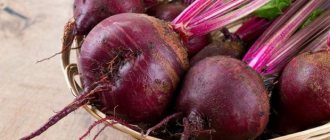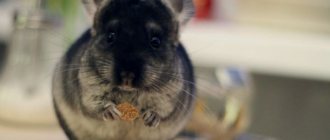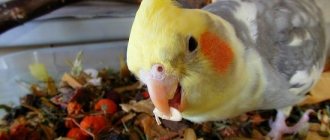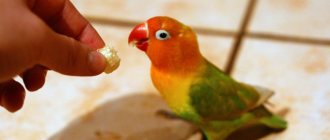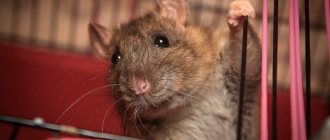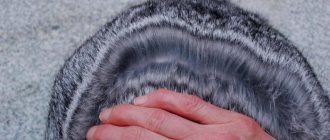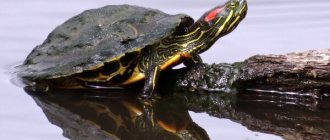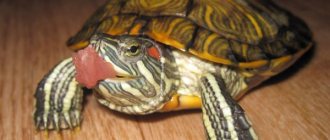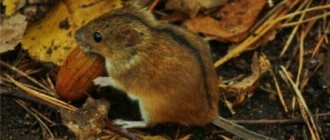The hedgehog is a cute and curious animal that often goes in the evenings to visit summer residents or owners of country houses. You can see a hedgehog while walking in a park or forest at dusk.
The cute little face of the animal often makes passersby want to feed it something and pamper it with something tasty. However, you need to know what hedgehogs eat so as not to harm the animal.
The main food of hedgehogs in nature
On the one hand, a hedgehog can be fed with almost all foods, because the animal in nature is an omnivore. Moreover, although harmless in appearance, it prefers protein foods - slugs or earthworms.
The main part of a hedgehog's diet consists of insects. For example, caterpillars, beetles or flies.
You are lucky if hedgehogs like to wander around your garden at night - they will happily rid the plants of pests. The hedgehog is also a predator - it catches lizards, mice or frogs.
A distinctive feature is the absolute immunity of the animal’s body to snake venom. If a small predator enters into a fight with a snake, it will emerge victorious in almost any case!
“Give” the hedgehog something with your own scent
Hedgehogs rely on their sense of smell more than they do on sight and hearing, and therefore your scent, accompanying the hedgehog wherever he feels calm, will allow the pet to get used to you very quickly. Take one of your old clothes - a T-shirt, sweater or shirt, wear it for a while (at least a few days), and then put it in your hedgehog's cage or house. If his house is too small for this, choose an item that you were going to throw away, and after wearing it, cut a piece of a suitable size. The most important thing is that there are no threads sticking out of this thing, otherwise the hedgehog might eat them.
After a few days, the hedgehog will understand that you smell the same as his calm and safe sleep, and therefore will strive to be near you during the day.
If you don't have something suitable, just take a piece of fleece, wool or some old blanket or blanket and sleep with it for a few nights. The item will also become saturated with your scent.
What to feed a hedgehog at home
Meat
Meat is considered an indispensable product for hedgehogs. For the animal's body, the best option is lean meat, such as rabbit, veal, turkey or chicken.
It would be a good idea to scald the meat with boiling water after keeping it in the freezer. It is not recommended to boil or fry the product - the bacteria or vitamins necessary for the hedgehog may disappear.
The hedgehog also eats not only meat itself, but also lungs, liver or heart.
Fish
Wild hedgehogs rarely feast on fish. But if the question arises - what to feed a hedgehog at home with a minimum of food available, fish would be a good option.
But fish or its entrails can only be given fresh, otherwise the hedgehog may feel unwell or get sick. When feeding fish, moderation is observed - it alone cannot make up the menu of a forest dweller. It is best to use fish as a feed or treat.
Unlike meat, fish is cooked without salt and spices.
Store-bought feed
Nowadays, few companies produce food designed specifically for feeding hedgehogs.
Attention
It is allowed to temporarily replace it with cat food, but cheap food will not do!
Only premium or super-premium class. Constantly feeding your hedgehog this kind of food is not a good option. Still, nothing better has been invented for everyday nutrition than special food for hedgehogs. It can be found in some pet stores.
Concentrated animal feed
Sometimes concentrated fish, meat and bone, blood or bone meal is added to the animal’s food as a source of vitamins or nutrition.
Insects
As in the wild, hedgehogs should not be limited in their staple diet of insects. Where can the common man get them? In addition to the obvious method - hand fishing, there is also a less labor-intensive method - buying live food at a pet store.
Zofobas, cockroaches, crickets or mealworms are popular among hedgehog owners. They are sold not only live, but also dried or frozen. A mixture of dried insects and boiled eggs or minced meat is considered very nutritious.
Vegetables and fruits
Vegetables and fruits are an irreplaceable source of vitamins and fiber. At home, you can feed your hedgehog every day. For vegetables, the animals are given carrots, cucumbers or zucchini.
There is a misconception about the benefits of potatoes for hedgehogs. Potatoes contain a large amount of starch, so they should be given rarely as a treat, and then only boiled.
Hedgehogs often eat berries in the wild, such as strawberries, strawberries, cherries, cherries or cranberries. Hedgehogs love fruits - apples, pears, peaches or bananas.
Unfortunately, sometimes animals do not understand the full value of fiber for their body and do not eat vegetables, fruits or berries. It is allowed to give baby food or homemade puree. You should not take risks and feed your hedgehog exotic vegetables and fruits, which are not very common in our country.
Soft food
There are also more unusual foods on sale. Wet or canned food is made from hedgehogs' favorite food - insects. They do not need to be prepared or mixed with other foods, unlike wet cat food.
Water for the hedgehog
Like any other living creature, a hedgehog needs to drink a lot and constantly replenish its water balance. Therefore, it is necessary to provide round-the-clock access to fresh and clean water for the animal. Water is poured into a bowl and placed in such a way that the pet does not accidentally drop it.
Brief description of the animal
A hedgehog is an animal that is classified as a hedgehog, a type of chordate. The length of its body may vary, as there are different species of this family. On average, the body size is from 10 to 44 cm. Weight ranges from 300 grams to 1.5 kg. Hedgehogs have a tail that grows up to 21 cm in length, but can be smaller.
The skull is wedge-shaped, while the muzzle is elongated and has a pointed nose. The teeth are sharp, although small in size. There are 20 of them on top, and 16 on the lower jaw. Moreover, some varieties have up to 44 teeth. The front incisors are large and resemble fangs; with their help, animals eat their prey.
Hedgehogs have elongated middle fingers, which make it easy to clean their needles. The spines are hollow, and sparse hairs grow between them, which are almost invisible. The belly and head are covered with hair. On average, a hedgehog has approximately 10 thousand needles, which are updated regularly.
The average lifespan of individuals is 3-5 years. In indoor conditions they can live up to 10 years, because they will not die from their natural enemies. In the natural environment, hedgehogs can be hunted by wolves, ferrets, badgers, hyenas and other forest or steppe predators.
Feeding little hedgehogs
If a person is professionally involved in breeding hedgehogs, he will not have any questions about the proper preparation of a diet for small hedgehogs.
But it often happens that people have picked up a motherless hedgehog and don’t know what to feed it. Usually a grown-up hedgehog falls into the hands of a person.
Firstly, it is worth purchasing a special mixture for hedgehogs. If it is not sold in the nearest stores, it can be replaced with kitten formula.
If this is not available, goat milk is used. Hedgehogs are fed twice a day at the age of 1.5 to 2 months.
In rare cases, a person finds newborn hedgehogs. They cannot eat on their own, so they are fed from a pipette. Every 2-4 hours give 2-3 ml of the mixture.
From the fifth week, hedgehogs begin to accustom themselves to dry food and eating independently. As a rule, the process of accustoming to independent feeding takes no more than a week.
After this, the grown hedgehog can be fed like an adult. But do not forget about the dependence of the amount of food on the weight of the pet.
Feeding mode
The number of meals depends on the age of the animal. An adult hedgehog is fed 1-2 times a day, a teenager is given three meals a day. The pet is given its own bowls, which are thoroughly washed with laundry soap after each meal.
A large pet weighing up to 1 kg is given about 100-150 g of food per day. Moreover, the bulk of the portion is left for the evening.
Feeding a hedgehog more than normal is extremely undesirable. Systematic overeating has a negative impact on the health of the animal.
For the animal, it is important not only balanced feeding, but also compliance with the drinking regime. Therefore, your pet should always have fresh water. Moreover, it is advisable to pour it not into a drinking bowl, but into an ordinary bowl.
Hedgehogs are picky and omnivorous animals. They eat everything they are given with equal appetite. Therefore, in order for them to stay healthy longer and delight their owners with their presence, you need to make sure that forbidden foods do not get into their bowls.
Prohibited Products
Although the prickly animal is omnivorous, some food can seriously harm it!
- You should not feed hedgehogs any kind of sweets (chocolate, candies), as such treats often lead to diabetes.
- Dried fruits and fruits with seeds are dangerous for the animal - their bones often get stuck in the animal's throat.
- Any fast food, dry food for dogs or cats, products with thickeners, rolls, chips, crackers, onions or garlic are strictly prohibited.
- Food from the human table is also not suitable for hedgehogs.
A strong misconception is the public opinion about the benefits of milk for hedgehogs.
Attention! Cow's milk should not be given to a hedgehog; it leads to health problems.
The exception is small hedgehogs - they drink milk, but not cow's, but goat's.
Potentially inedible products are also dangerous for pets. Hedgehogs love to chew plastic. This should not be allowed due to the risk of poisoning and death of the hedgehog.
Also, animals sometimes bite live wires and die.
It is strictly forbidden to give to hedgehogs
African pygmy hedgehogs are never given food from the owner's table. It is forbidden to treat them to chips, fast food, products that contain preservatives, dyes, spices, salt, flavorings and flavorings.
Your pet's diet should not contain:
- garlic, onion;
- avocado;
- pineapple;
- citrus fruits;
- grapes;
- nuts;
- sunflower seeds;
- chocolate;
- milk, dairy products.
Dried fruits are not given to pets for two reasons. When dried, the concentration of sugar in pieces of fruit increases, and its excess has a bad effect on the health of the animals. In addition, dehydrated pieces of food stick to the larynx, interfering with breathing and swallowing processes.
FAQ
How often should you feed an ornamental hedgehog?
An adult hedgehog is usually given food in its bowl in the late afternoon. Hedgehogs are nocturnal animals and it is at night that the main time of their activity and food intake occurs. Feeding in the morning often leads to food spoilage.
Is it possible to feed a hedgehog cat food?
No, you cannot feed your hedgehog wet cat food on a regular basis. It can be given as a supplement or part of the diet, but not as a main course. As for dry cat food, it is contraindicated for hedgehogs!
Where live
The habitat is wide, because hedgehogs are found in many European countries. They also live in Russia, and they can also be seen in hot Africa, New Zealand, the East and Asia.
Hedgehogs prefer to settle in steppes, deserts, cultivated landscapes, and forests. It is noteworthy that they can be found even in cities.
Hedgehogs have elongated middle fingers, which make it easy to clean their needles. The spines are hollow, and sparse hairs grow between them, which are almost invisible. The belly and head are covered with hair. On average, a hedgehog has approximately 10 thousand needles, which are updated regularly.
How to breed insects
What to feed a small hedgehog at home? If you plan to leave the hedgehog for a long time, you can take care of the constant presence of insects. At home, you can breed large mealworm larvae.
To do this, take a small tightly knit wooden chest (it is better to cover the inside of a wooden box with foil) or a plastic container. A small hole is made in the upper part for air access, tightly covered with a fine mesh.
Bran is poured into the box in several layers, separated by natural fabric or gauze. Now the mealworm larvae are placed in the container. They can be purchased at a pet store or market. The box is placed in a warm place. Mealworms develop into pupae and later into beetles. The bugs again lay eggs, from which worms emerge. Some of the worms are left for further reproduction. Bran is periodically added. Other insects can be bred in a similar way.
How to catch and store insects
Not everyone wants to have a box infested with insects in their home. In summer, they can be caught and collected in nature. Almost any insects will do: flies, beetles (hedgehogs are especially fond of cockchafers), grasshoppers and locusts, as well as larvae of any insects and worms. Flying insects can be collected in a light trap. May beetles are collected from trees.
Caught insects can be stored. First, the closed jar is immersed in a pan of hot water. When all the insects are dead, they are dried in the sun. Now the food can be crushed and stored in a glass jar with a tight lid.
Store-bought feed
Preparing live food and calculating the diet takes a lot of time and effort, which is why many hedgehog owners prefer store-bought formulations. They are sold in several varieties of composition and form:
- Spike's Dinner dry food. UK made range. The composition includes poultry meat, feed wheat, rice, brewer's yeast, whole corn, flax seeds, chicken fat. The food is available in packs of 650 grams, the recommended amount for wild hedgehogs is 20 grams per day;
- T-RexFood pate. Wet food suitable for pet hedgehogs. Consists of chicken necks, house crickets (30%), carrots, apples, pumpkin and seaweed extract;
- complete dry food Menu, made in Germany. Contains grains, meat and by-products, shellfish, crustaceans, nuts, fruits, mealworms and vegetables. Can be used as the basis of the diet of forest and pygmy hedgehogs.
To keep a hedgehog at home, some people use cat food, as it is easier to find in the store. This type of nutrition cannot be called optimal, but it is acceptable. The main thing is to purchase super-premium holistic food; it should not contain soy, wheat or other starch-replacing products, dyes, etc.
From the life of hedgehogs
Hedgehogs, as a rule, are found in not too dense forests, in copses, in shelterbelts, in ravines overgrown with bushes, etc. They can be found both in Europe and in Asia Minor. Sometimes you can find these prickly creatures in New Zealand. Scientists claim that not so long ago they generally inhabited North America. In Russia you can find 4 types of hedgehogs: common, dark-spined, Daurian and long-eared. The most common species is, of course, the common hedgehog.
Zoologists classify hedgehogs as insectivores, since their main food is various small ones. Moreover, without any exaggeration, hedgehogs can be called real orderlies of forests and vegetable gardens! The fact is that they eat a huge amount of certain insects and mollusks (slugs, snails) that are harmful to gardens and forests. By the way, the destruction of forest nests with broods of rodents that harm forestry and, of course, agriculture can also be credited in favor of these animals.
The life of hedgehogs completely depends on certain climatic and natural conditions: they avoid damp places, and on rainy days they generally prefer to sit in their “houses”. For housing, these creatures use ground nests, which they build from forest vegetation, or use burrows once abandoned by rodents. A hedgehog is one of the few wild living creatures that can allow a person to come within a fairly close distance. And this is not because hedgehogs are brave creatures. The fact is that these prickly pranksters have mediocre eyesight and rely on their sense of smell, which often fails them: if the wind blows in the direction opposite from the hedgehog, then they do not sense a person approaching him at all.
Hedgehogs never run away from danger. They have a completely different method of defense: when they sense something wrong, they immediately curl up into a prickly ball, exposing their sharp needles. It is curious that the hedgehogs would not have been able to escape by running: their legs are too short, and they themselves are clumsy creatures. But they deserve credit in another field: hedgehogs hunt insects and snakes very cleverly. The situation is worse with rodents: resourceful wood mice and voles are smart creatures that don’t just come easy. You still have to try to catch them! By the way, hedgehogs are nocturnal inhabitants; during the day, these prickly creatures mainly sleep like babies.
Hedgehogs are one of the most interesting animals, they are so cute and funny! But what do hedgehogs eat? You will find a detailed answer to the question in the article.
Probably, each of us in childhood wanted to have a hedgehog at home, but then it was considered a curiosity. Now in many pet stores you can easily purchase special food for this “pet” animal. It turns out that hedgehogs easily adapt to life among people, and therefore they can be kept right at home. But before you decide to take such a step, you need to learn as much as possible about this type of animal - what hedgehogs eat, how they live, what they love.
